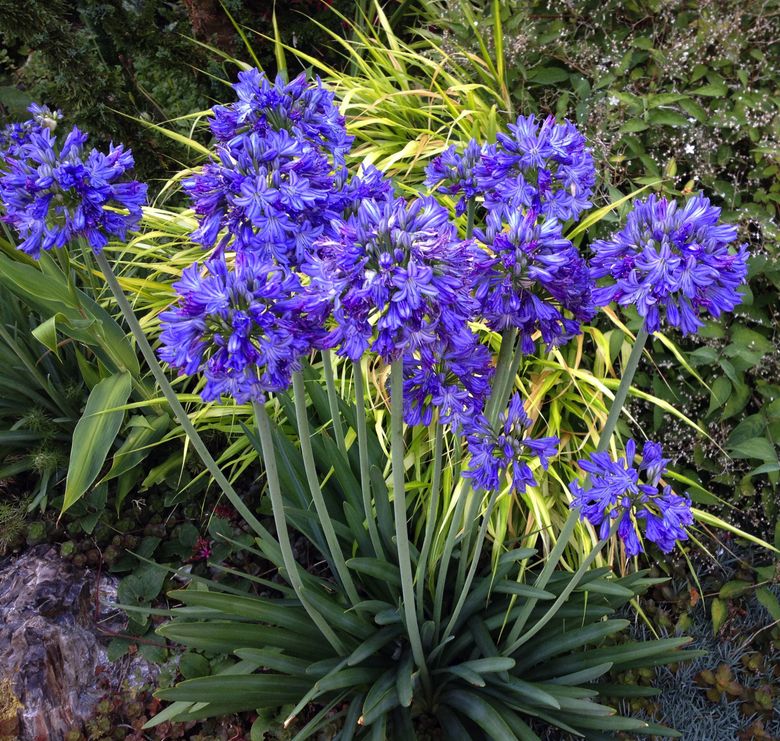Grasping the Art of Agapanthus Care: Important Actions for Healthy And Balanced Growth and Lively Flowers
In the realm of gardening, the cultivation of agapanthus stands as a fulfilling endeavor for those that seek to support these sophisticated blooming plants. From selecting the appropriate variety to grasping trimming methods, the journey towards growing prospering agapanthus plants is diverse and holds the vital to unlocking the full possibility of these herb gems.

Choosing the Right Agapanthus Variety

When selecting the best Agapanthus variety for your yard, think about variables such as environment viability, blossom color, and development behavior. Agapanthus, frequently called Lily of the Nile or African lily, can be found in a variety of shades varying from tones of blue and purple to white. Select a bloom color that enhances your existing garden palette to produce an unified landscape. Furthermore, think about the environment in your area to make certain the Agapanthus selection you pick can grow in your particular problems. Some selections are much more forgiving of chilly temperatures, while others prefer warmer environments. Comprehending the growth habit of various Agapanthus selections is essential for proper positioning within your yard. Some varieties have a clumping growth behavior, suitable for borders or containers, while others have an even more spreading nature, ideal for ground cover or mass plantings. By thoroughly reviewing these factors, you can pick the excellent Agapanthus variety to boost the elegance of your yard.
Suitable Planting Problems
Considering the ideal environmental requirements is important for successful Agapanthus farming. Agapanthus flourishes in well-draining soil with a slightly acidic to neutral pH degree. When planting, select an area that receives complete sunshine to partial shade. In hotter climates, supplying some afternoon shade can protect against scorching of the leaves. Agapanthus plants are delicate to chilly temperatures and should be shielded from frost during cold weather.
To guarantee healthy and balanced development and vivid blossoms, plant Agapanthus bulbs at a depth of concerning 2-4 inches and space them 8-12 inches apart. Adding natural issue, such as garden compost, to the soil can enhance water drainage and fertility, advertising durable origin growth. Mulching around the base of the plants helps retain moisture and suppresses weed growth. Normal watering is crucial, particularly during the expanding season, to keep the dirt consistently moist yet not waterlogged.
Watering and Feeding Tips
Keeping correct wetness levels and giving necessary nutrients are crucial aspects in the treatment program for Agapanthus plants. When it comes to watering Agapanthus, it is vital to strike an equilibrium. These plants favor regularly moist dirt check my site but are vulnerable to root rot if overwatered.
Feeding Agapanthus is necessary for promoting healthy and balanced growth and prolific blooms. Use a well balanced plant food, such as a 10-10-10 formula, in the very early spring as new development emerges. By complying with these watering and feeding pointers, you can guarantee your Agapanthus plants thrive and create vibrant, lasting flowers.
Pruning Methods for Agapanthus
Trimming Agapanthus plants at the appropriate times and with correct strategies is essential for preserving their wellness and advertising optimum development and blooming. The ideal time to prune Agapanthus remains in late winter or very early springtime prior to new growth emerges. Start by removing any type of dead or yellowing fallen leaves near the base of the plant. Cut them as short as feasible without harming the arising shoots.
Deadheading invested flowers can also redirect the plant's power right into generating more blossoms instead than setting seeds. If you want to accumulate seeds for breeding, leave some blossoms to completely dry and fully grown on the plant.
Remember to use clean, sharp tools to make specific cuts and minimize the risk of presenting illness. Agapanthus. Regular trimming will certainly aid maintain your Agapanthus looking you could check here cool and healthy while making sure an abundant screen of gorgeous blooms
Managing Common Bugs and Diseases
After making certain appropriate pruning techniques for Agapanthus, it is crucial to attend to common parasites and diseases that can influence the health and wellness and vigor of these plants. Agapanthus plants are typically hardy yet can still come down with particular problems. One usual parasite that impacts Agapanthus is the Agapanthus gall midge. This little, orange fly lays its eggs in the foliage, bring about altered growth and blossom buds that fail to open up. To fight this insect, trim and ruin any kind of affected plant components and consider making use of insecticidal soap.
Another typical issue is fungal leaf area, which offers as dark lesions on the fallen leaves. To stop fungal conditions, ensure good air circulation around the plants, prevent overhanging watering, and remove any type of contaminated leaves immediately. Furthermore, Agapanthus plants can experience from origin rot if they are planted in improperly draining pipes soil. To stop this, plant Agapanthus in well-draining dirt and stay clear of overwatering. By being vigilant and taking timely activity against insects and illness, you can help your Agapanthus plants flourish and create vivid blossoms.

Conclusion
To conclude, grasping the art of agapanthus care entails picking the ideal variety, giving perfect growing conditions, proper watering and feeding, suitable trimming techniques, and resolving typical insects and illness. By complying with these vital actions, you can guarantee healthy and balanced development and dynamic flowers for your agapanthus plants. Bear in mind to frequently keep track of and keep your plants to advertise their overall health and longevity.
To make certain Visit Your URL healthy development and lively flowers, plant Agapanthus light bulbs at a deepness of regarding 2-4 inches and space them 8-12 inches apart. By adhering to these watering and feeding pointers, you can ensure your Agapanthus plants prosper and create vivid, long-lasting flowers.
One usual insect that influences Agapanthus is the Agapanthus gall midge. Additionally, Agapanthus plants can suffer from root rot if they are grown in poorly draining pipes soil. By adhering to these vital steps, you can make sure healthy development and lively flowers for your agapanthus plants.